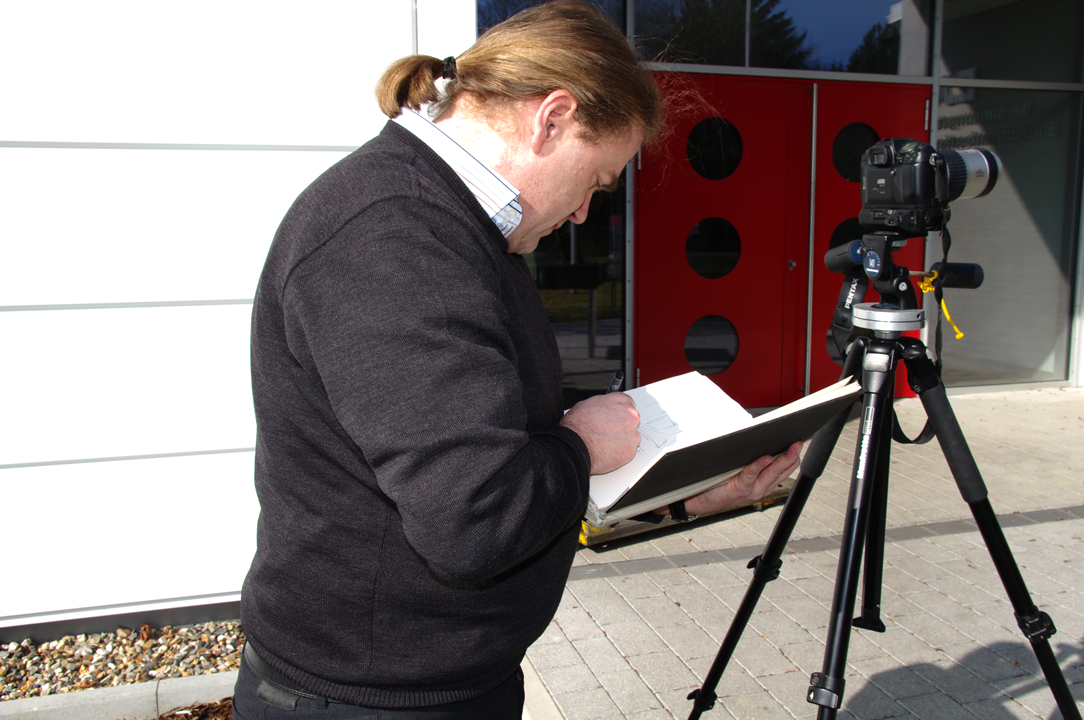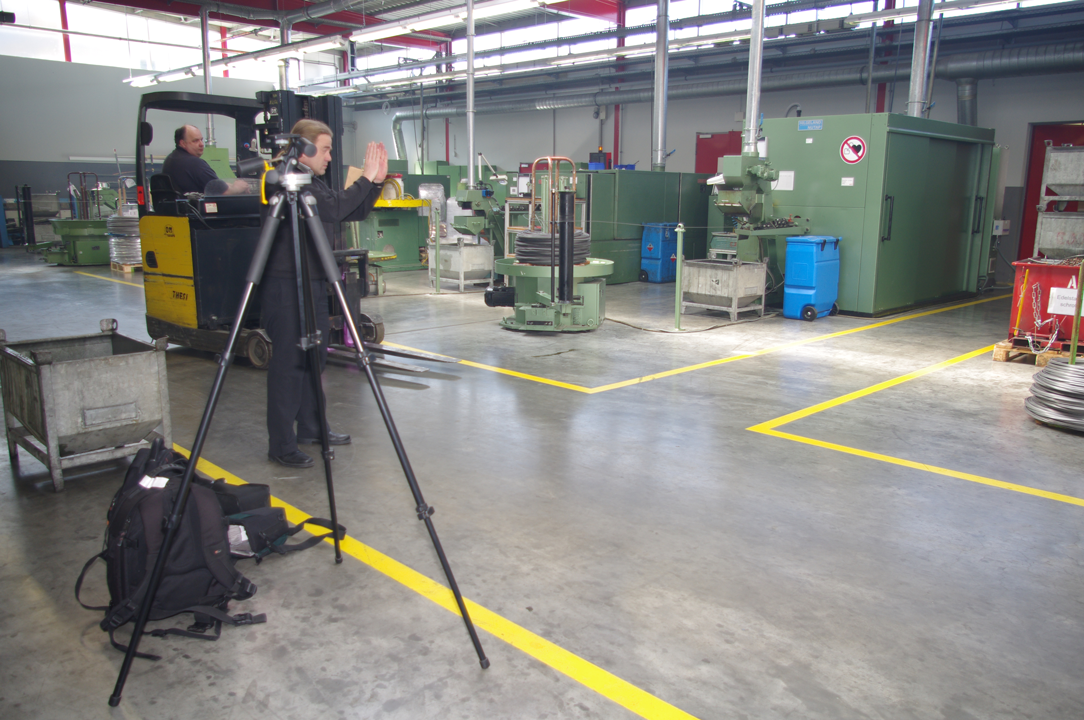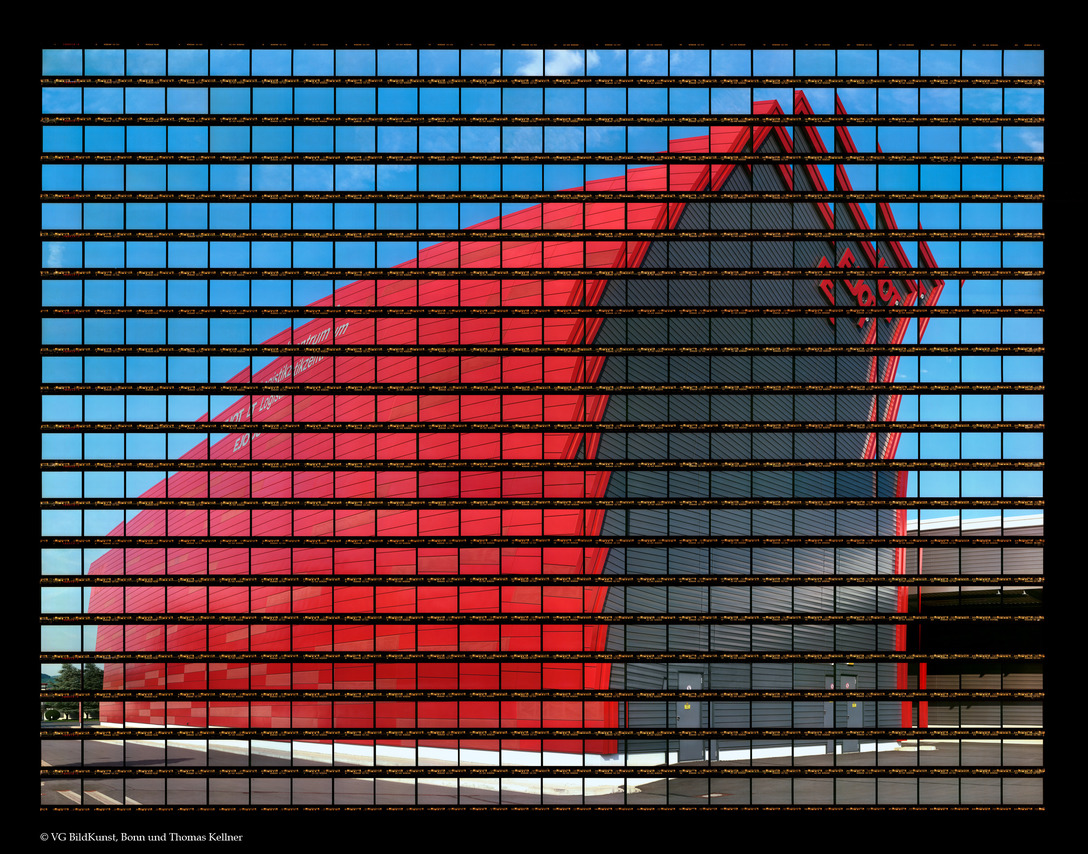Corporate Art EJOT 4/4
With the cooperation of fine art photographer Thomas Kellner and the company Ejot, the red fire wave from the Flucticulus series was created in 2016. This series is about the wave-like generated movement of otherwise steadfast buildings. In this case, the red fire wave is the warehouse of the company Ejot in Bad Berleburg. This is interpreted by Thomas Kellner in a cubist and deconstructive way.
Red fire wave
In his series Flucticulus, Thomas Kellner takes a cubist and deconstructive approach to the company building. The appearance of the warehouse of the Ejot group of companies is also changed. The red massive and steadfast warehouse is exposed to a guided movement. The bright and glowing red symbolizes a fire. For the viewer it seems as if the wave increases in size from left to right. However, there is still a guided and controlled movement in the image. The eye follows the new dynamics of the company building. Furthermore, the clear blue sky creates a contrast that sets the building apart from the background and brings it even more into focus. Also, the isolated clouds in the sky, look like smoke rising from the red fire wave. The front of the warehouse looks like the opening of the wave. The doors lose their functionality and are engulfed by the large black one. The Red Fire Wave growing out of the ground, thus brings an incomparable dynamism to the image.
Function
Through the particularly deconstructive view of the warehouse, Thomas Kellner breaks beyond simple architectural photography and gives the building an incomparable cubist style. This sets the building in motion and gives it a new wave-like dynamic. However, Red Fire Wave is not interpreted as a wave of destruction, but perfectly complements the other works in the Flucticulus (Latin for small wave) series. The wave has always been a factor in art and photography. It embodies a natural dynamism and movement that can be recognized in the images. A wave also has only a certain guidance, it only goes forward. The movement of a wave is guided and works its way out in one direction. But even though the building of the Ejot group of companies has changed, the motif can still be associated with industrial culture. With this work, Thomas Kellner manages to bring together industry and art and to give meaning to the Red Fire Wave. Because a movement and dynamics also brings a change. And change is an important part of industry. Because this also changes and is in permanent motion. A company can be understood like a wave. It builds up slowly at first, but grows over time, like a wave. It grows in size and, in the best case, moves forward. Through the movement also changes arise. A company works similarly future-oriented. With the time it brings change in order to maintain the movement.
Ejot and Kellner
Thomas Kellner refers with its red fire shaft a suitable work for the group of companies Ejot. The screw and turning company, has similar to a wave a growing development behind itself. And the fire stands for in the case not for destruction, but can also be understood as a motive of creation. With the help of fire, tools were made very early. Thus, the motif of the fire wave also seems appropriate for the Ejot company. The group of companies specializing in fastening and fixing technology, also builds on the history of tool manufacturing. Therefore, the selection to the function of the work red fire wave seems coherent in itself. Ejot also recognized these works and led the awarding of the supplier awards, where other works were presented by Thomas Kellner and the company Ejot to their customers. These were also cubist and deconstructive paintings from the company. This clearly strengthened the relationship between art and industry and blurred the boundaries
Contact
EJOT Holding GmbH & Co. KG
Im Herrengarten 1
DE 57319 Bad Berleburg
Germany
+49 2751 5290
info@ejot.com
www.ejot.de



Author
Simranjit Kang, 21.09.1998 Jalandhar/India
Literature-, Culture- und Media Studies
Internship: August, September
Basketball, Culture, The Office








